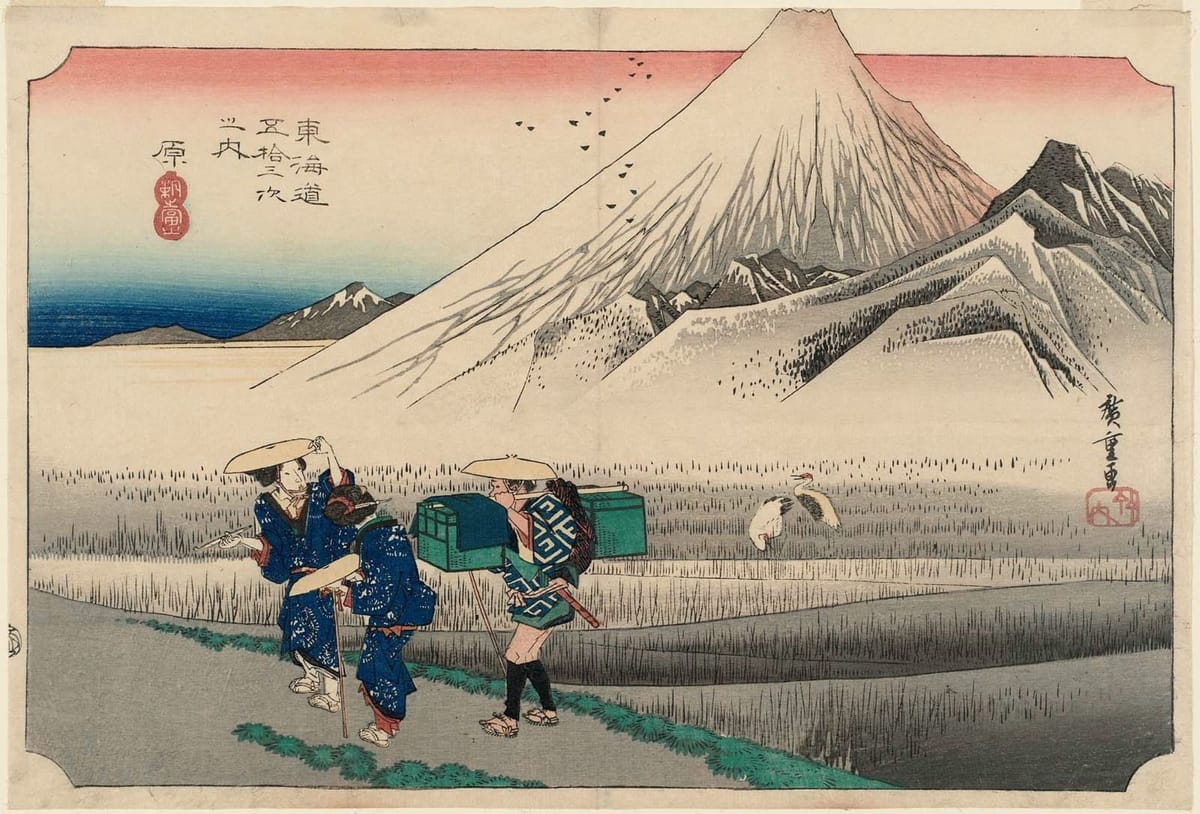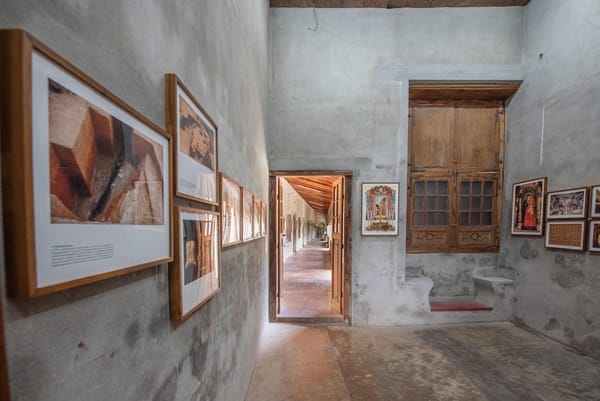The Ukiyo-e Impulse: How Japanese Prints Shaped Degas's Vision
Edgar Degas's art, profoundly influenced by Japanese woodblock prints, embraced bold compositions, vibrant colours, and dynamic perspectives. This cross-cultural exchange enriched his work, marking a pivotal moment in the evolution of Western art.

In the 19th century, a wave of Japanese art, particularly woodblock prints, swept through Europe, profoundly influencing Western artists. This movement, known as Japonisme, introduced an entirely new aesthetic to Western art, characterized by its bold compositions, vibrant colours, and novel perspectives. Among the many artists captivated by this exotic allure was Edgar Degas, a pivotal figure in the Impressionist movement. Degas, known for his innovative approach to capturing movement and his keen observational skills, found in Japanese woodblock prints a fresh perspective that significantly influenced his artistic development.
The Arrival of Japonisme in Europe
The mid-1800s saw the opening of Japan to the West after centuries of isolation. The subsequent influx of Japanese goods, including ukiyo-e woodblock prints, into Europe sparked a fascination among artists and collectors alike. Ukiyo-e, meaning "pictures of the floating world," depicted scenes from everyday life, landscapes, and theatre. These prints were characterized by their flat planes of colour, asymmetrical compositions, and intricate line work. Artists such as Hokusai and Hiroshige became household names in European art circles, their works influencing the burgeoning modern art movement.
Degas and the Japanese Aesthetic
Edgar Degas (1834-1917) was not immune to the charms of Japonisme. While Degas never visited Japan, he avidly collected Japanese prints and was deeply influenced by their distinctive style. This influence permeated various aspects of his work, from composition and perspective to subject matter and technique.
Composition and Perspective
One of the most striking influences of Japanese woodblock prints on Degas was their approach to composition and perspective. Traditional Western art often adhered to linear perspective and balanced compositions. In contrast, Japanese prints frequently utilized flat planes, oblique angles, and off-centre subjects, creating a sense of spontaneity and movement.

Degas adopted these techniques to great effect. His compositions began to reflect a more dynamic and unconventional approach. For instance, in "The Dance Class" (1874), Degas arranges the figures in an off-centre, asymmetrical composition, echoing the style of ukiyo-e prints. The viewer's eye is guided through the scene in a manner reminiscent of Japanese art, where the narrative unfolds across the canvas rather than being confined to a central focal point.
Capturing Movement
Degas is renowned for his depictions of dancers, bathers, and everyday scenes imbued with a sense of movement and immediacy. Japanese woodblock prints, with their focus on the ephemeral nature of life, resonated with Degas's desire to capture the transient moments of modern life.

In his series of ballet paintings, Degas employed techniques reminiscent of Japanese prints to convey movement. He often depicted dancers in mid-action, capturing their gestures and the flow of their costumes with a fluidity that suggests motion. This approach is particularly evident in "The Star" (1878), where the dancer is captured mid-pirouette, her form seemingly suspended in time. The use of cropping and unusual angles in these works also reflects the influence of Japanese prints, which often employed similar techniques to create a sense of immediacy and intimacy.
Colour and Pattern
Japanese woodblock prints are celebrated for their bold use of colour and intricate patterns. These elements found their way into Degas's palette and compositions, adding a new vibrancy and texture to his work. Ukiyo-e prints often utilized bright, flat colours without the gradations typical of Western painting, a technique that Degas began to explore in his pastels and paintings.

In "Woman with Chrysanthemums" (1865), Degas employs a flat, patterned background reminiscent of Japanese prints. The juxtaposition of the richly patterned kimono with the simplicity of the background creates a striking visual contrast, highlighting Degas's ability to blend Eastern and Western artistic traditions seamlessly. His use of colour became more experimental, incorporating the bold, contrasting hues seen in Japanese art, thus invigorating his compositions with a fresh dynamism.
Intimacy and Everyday Life
Degas's interest in capturing intimate, everyday moments aligns closely with the subject matter of many Japanese woodblock prints. Ukiyo-e artists often depicted scenes of daily life, from geishas preparing for a performance to actors on stage and ordinary people going about their routines.

Degas's works, such as "The Tub" (1886), reveal a similar fascination with the private moments of women's lives. This pastel drawing shows a woman bathing, viewed from an unconventional angle that enhances the intimacy of the scene. The influence of Japanese prints is evident in the composition, the use of space, and the focus on a fleeting, personal moment.
Printmaking Techniques
Degas's experimentation with printmaking was also inspired by Japanese techniques. He explored various printmaking methods, including monotype, etching, and lithography, often incorporating elements characteristic of ukiyo-e prints. His monotypes, in particular, reflect the bold lines and contrasts found in Japanese art.

In works like "L'Absinthe" (1876), Degas utilizes a flattened perspective and stark contrasts between light and dark, reminiscent of Japanese woodblock prints. The influence of ukiyo-e can also be seen in his use of negative space and the way he simplifies forms to their essential lines and shapes, creating a powerful visual impact.
The Broader Impact of Japonisme on Western Art
Degas was not alone in his fascination with Japanese art. His contemporaries, including Claude Monet, Vincent van Gogh, and Mary Cassatt, also drew inspiration from ukiyo-e prints. This collective embrace of Japanese aesthetics marked a significant shift in Western art, challenging traditional notions of composition, perspective, and subject matter.
Monet, for instance, created his famous series of water lilies and Japanese bridges, drawing directly from the serene landscapes of Japanese prints. Van Gogh incorporated the bold colours and dynamic lines of ukiyo-e into his vibrant paintings, while Cassatt's intimate portraits of women and children reflect the influence of Japanese compositions and patterns.
This cross-cultural exchange enriched Western art, introducing new visual languages and expanding the possibilities of artistic expression. The principles of Japonisme can be seen in the development of movements such as Art Nouveau, which embraced the flowing lines and organic forms characteristic of Japanese design.
Degas's Legacy and Japonisme Today
Edgar Degas's engagement with Japanese woodblock prints exemplifies the transformative power of cross-cultural influences in art. By integrating elements of ukiyo-e into his work, Degas not only broadened his artistic repertoire but also contributed to a broader dialogue between Eastern and Western art traditions.
Today, the legacy of Japonisme continues to resonate in contemporary art. Artists and designers draw inspiration from the aesthetic principles of Japanese prints, incorporating their bold compositions, vibrant colours, and intricate patterns into modern creations. The enduring appeal of Japonisme underscores the timeless nature of artistic exchange and the endless possibilities it offers for innovation and creativity.
Conclusion
The influence of Japanese woodblock prints on Edgar Degas represents a significant chapter in the history of art. Through his engagement with the aesthetic principles of ukiyo-e, Degas not only enriched his own work but also contributed to a broader artistic movement that continues to inspire and captivate audiences worldwide. His legacy serves as a testament to the enduring power of cross-cultural influences and the boundless potential of artistic expression.





